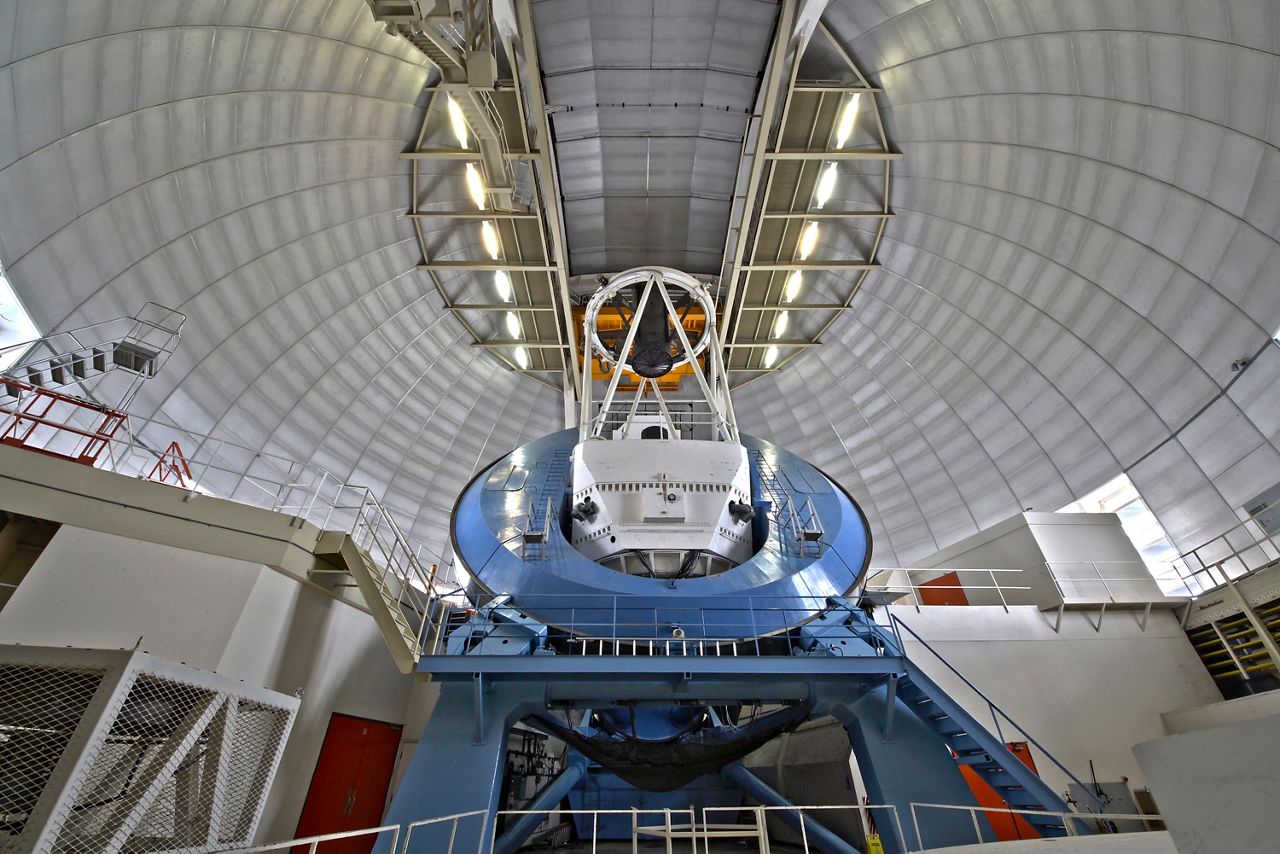The universe is a mystery that we’ve explored for centuries. However, in just the last few years, we’re learning new information about space, the galaxies and stars above us.
Scientists from the University of California Irvine led a five-year mission to make the largest 3D map of the cosmos to figure out where the galaxies are.
Recently, researchers with the Dark Energy Spectroscopic Instrument (DESI) released data about the maps between 2020 to 2021 to the public.
DESI is a visible light telescope that sits atop Kitt Peak National Observatory in Tucson, Arizona.
The data from that telescope shows our universe is expanding faster and faster every day because of dark energy and that’s what DESI is trying to answer.
The Dark Energy Spectroscopic Instrument installed on the Nicholas U. Mayall 4-meter Telescope on Kitt Peak National Observatory. (U.S. Department of Energy Office of Science)
I talked to UC Irvine Professor of Physics and Astronomy Dr. David Kirkby about dark energy, the telescope and its findings.
Dark energy is a mystery and we know little about it. However, professor Kirkby says, “we know most of the universe is made of dark energy. We know that because it explains why the universe is expanding faster.”
When it comes to figuring out how the universe is expanding, that’s where DESI comes in.
“We collect all the light from a galaxy and we put it down on an optical fiber, and then we spread the light out from that fiber into all of its constituent colors,” said Kirkby.
This process allows them to get a detailed measurement of the galaxy and calculate how far the galaxy is.
Here’s a video that the UCI team put together to show the view of the telescope.
DESI mapped over 40 million galaxies, quasars and stars. Plus, it discovered, nearly 2 million objects of research as well.
For example, looking at galaxies that have quasars in them. A quasar is a supermassive black hole.
“We want to use our telescope as a time machine and look back. We want to look at light that has been traveling for billions or even tens of billions of years because it lets us see the early moments of the universe,” Kirkby told me.
The telescope uses 5,000 tiny robots to view over 100,000 galaxies at night. Watch the video below to see how DESI works.
Over the next three years, researchers will release and share more data with the public to understand mysteries of the universe. Plus, another five-year cosmic cartography project will be in the works as well.
“We’re driven by human curiosity and our place in the universe. We’re trying to understand our cosmic pasts and predict what our cosmic future is going to be,” said Kirkby.
Our team of meteorologists dives deep into the science of weather and breaks down timely weather data and information. To view more weather and climate stories, check out our weather blogs section.

